
endangered
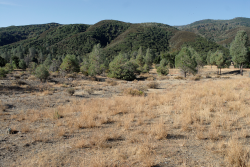
Hernandez spineflower in serpentine alluvium, near confluence of Clear Creek and San Benito River (San Benito Co.). Photo © September 17, 2011 Chris Winchell.
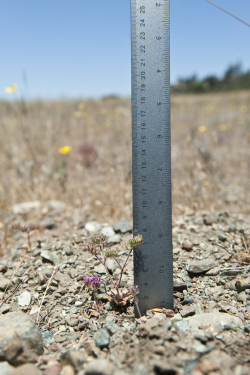
Hernandez spineflower in early flower, Clear Creek Management Area (San Benito Co.). Photo © June 7, 2013 Chris Winchell.
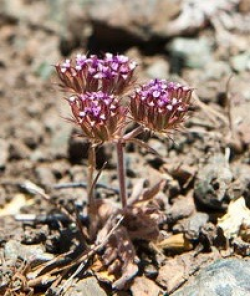
Hernandez spineflower in early flower, Clear Creek Management Area (San Benito Co.). Photo © June 7, 2013 Chris Winchell.
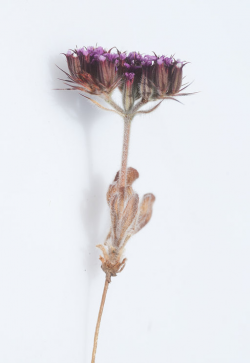
Hernandez spineflower in early flower, Clear Creek Management Area (San Benito Co.). Photo © June 7, 2013 Chris Winchell.
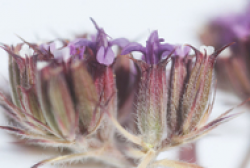
Hernandez spineflower inflorescence, Clear Creek Management Area (San Benito Co.). Photo © June 7, 2013 Chris Winchell.
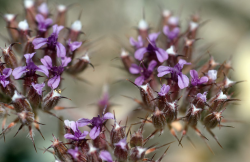
Hernandez spineflower inflorescence, Clear Creek Management Area (San Benito Co.). Photo © June 7, 2013 Chris Winchell.
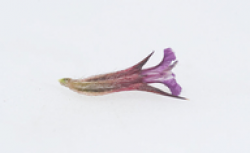
Hernandez spineflower single flower, Clear Creek Management Area (San Benito Co.). Photo © June 7, 2013 Chris Winchell.



This fact sheet was prepared by Dylan M. Neubauer under award NA04N0S4200074 from the National Oceanic and Atmospheric Administration (NOAA), U.S. Department of Commerce (DOC). The statements, findings, conclusions, and recommendations are those of the authors and do not necessarily reflect the views of the NOAA or the DOC.
© Copyright 2006, Elkhorn Slough Coastal Training Program
Last updated: Mar 16, 2017 11:25
Common Names - Hernandez spineflower
Family - Polygonaceae (Buckwheat Family)
State Status - none
Federal Status - none
Habitat/Associates
Hernandez spineflower occurs in in grassland, chaparral edges, or pine-oak woodland, occasionally on rocky knolls; generally in serpentine or serpentine-derived sandy, gravelly, or clay soils; 600–800 m (Reveal 2005, Reveal & Rosatti 2017, O’Dell, pers. comm. 2017, CNDDB 2017).
Key Characteristics
Plant annual, generally erect, generally 1–3 dm tall, hairy; leaf blades generally 1–3 cm long, 0.4–1 cm wide; inflorescence bracts generally 2 proximally, 3–5 whorled at middle, awns straight, 1–3 mm long; involucre tube 4–6 mm long, 3-angled, 6-ribbed, ± swollen at base; ± ridged transversely, teeth 6, 1–2 mm long, awns to 2 mm long, generally hooked; flower single, generally 5–6 mm long, sparsely hairy, perianth bicolored, tube white to yellow, lobes red to purple, outer lobes notched or ± cordate at tip, inner lobes fringed; stamens 9 (Reveal 2005, Reveal & Rosatti 2017).
Two-lobed spineflower, Chorizanthe biloba var. biloba (with no rarity status), has outer tepals deeply 2-lobed, occasionally erose apically; 200–700 m; May–August (Reveal 2005, Reveal & Rosatti 2017).
Flowering Period
May–September
Global Distribution
Eastern Diablo Range of the east Inner South Coast Ranges (southeast San Benito Co. and adjacent east Monterey Co.).
Reference Population
BLM Clear Creek Management Area
Taxonomic and Evolutionary History
George J. Goodman described Chorizanthe biloba—with perianth lobe cordate to bilobed at tip—in 1934 from a type specimen collected in 1911 by Katherine Brandegee in Paso Robles, San Luis Obispo Co., remarking that collections of this taxon had previously been referred “chiefly to C. palmeri.” The new taxon was described as ranging from San Benito and Monterey cos. southward into Santa Barbara Co.
Disputing this circumscription, Philip K. Munz (1958) considered these plants to be a variety of Chorizanthe palmeri S. Wats., referring them to C. p. var. biloba, with “outer calyx-segments ± deeply bilobed” in contrast to a second palmeri variety, ventricosa, with “outer lobes ± erose.”
In their 1989 “Revision of the Annual Species of Chorizanthe,” James D. Reveal and Clare B. Hardham placed Chorizanthe biloba Goodman into subsection Petasata (meaning “with a hat on, alluding to the dense, colorful flat-topped inflorescences”) of section Herbaceae—along with C. blakeyi [1B.3], C. obovata, C. palmeri [4.2, serpentine endemic], C. rectispina [1B.3], and C. ventricosa [4.3, serpentine endemic]. Species comprising this subsection range from Monterey and Fresno cos. southward to n Santa Barbara Co.
Noting “considerable variation between populations” of C. biloba, Reveal and Hardham decided the variation was significant enough “to merit taxonomic recognition.” Plants with “outer tepals deeply bilobed” occurring in the “Santa Lucia Mountains eastward to the western slope of the Diablo Range, La Panza, and Temblor ranges” were referred to var. biloba. Plants with “outer tepals emarginate or subcordate” occurring on the eastern slope of the Diablo Range, were split out as var. immemora. Hardham’s research (1989) yielded a consistent chromosome number of 2n = 40 for var. biloba while var. immemora chromosome numbers varied widely (2n = 34–46) (Reveal 2005). Based on this variability, Hardham believed that var. immemora could be “a product of past hybridization” (Reveal 2005) and suspected that its fertility may be low.
Emphasizing edaphic restrictions for their circumscriptions, Reveal and Hardham stated that C. biloba was “a well-marked species of non-serpentine soils.” However, given the Hernandez spineflower’s clear affinity for serpentine, this statement is puzzling, and even the type specimen they cited [Howell 11551 (CAS), near Hernandez, 17 August 1933] was collected in a serpentine-rich area (CNDDB 2017).
Subsequent treatments (Hickman 1993, Reveal 2001 & 2005, Reveal & Rosatti 2012) echoed Reveal and Hardham’s view that C. biloba was restricted to non-serpentine areas. However, as of 2017, the Jepson eFlora reflects the current understanding.
In his 2005 treatment Reveal (2005) discusses “recent molecular data” that “indicate that Chorizanthe is embedded within Eriogonum . . . meaning that either all species in [subtribe] Chorizanthineae should be moved to Eriogonum, or Eriogonum should be fragmented into several genera.” If it is determined that the approximately nine South American perennial species of Chorizanthe represent a separate genus from the North American annuals, then the “annual members (if not submerged into Eriogonum) would be called Acanthogonum Torrey” (Reveal 2005).
More recent molecular evidence (Kempton 2012) shows that subtribe Chorizanthineae is paraphyletic, along with Eriogonum, Chorizanthe “and most subgenera.” This data points to a close relationship between Chorizanthe biloba var. biloba and C. palmeri, affirming earlier observations.
Conservation and Threats
The main threat to Hernandez spineflower is invasive, non-native species, particularly the annual grass Spanish brome (Bromus madritensis). Despite occurring within privately owned rangelands grazed by cattle, the spineflower favors peripheral areas not frequented by grazers (O’Dell, pers. comm 2017).
The CNDDB (2017) reports 12 occurrences of Hernandez spineflower with nine occurring in San Benito Co. and two in Monterey Co. The Priest Valley occurrence, based on a 1929 Lester Rowntree collection, straddles the county line. This occurrence requires field work as it has not been observed since Rowntree’s collection was made. The other two Monterey Co. occurrences are at the s end of the range of this taxon, in Cholame Valley near Parkfield. Last observed in 2015, plants were said to be “uncommon” at both of these locations (CNDDB 2017).
Two occurrences along Coalinga Rd have not been relocated since original collections were made in 1919 (Bettys s.n.) and 1955 (Raven 8816). Peter Raven noted at the time of his collection (September 1) that Hernandez spineflower was “in full bloom, coloring fields purple.” Both of these occurrences require fieldwork, as well as an occurrence near San Benito, based on a 1946 Robert F. Hoover collection (6100).
The status of plants at the type locality “near Hernandez” is unknown (Howell 115511), though several plants were seen there in 2011 (see photos). Ca. 1000 plants were observed in 2014 n of the Hernandez Reservoir, while an occurrence near Williams Mtn. supported ca. 100 plants that year. Two occurrences in the BLM Clear Creek Management Area supported ca. 200 plants in 2015.
References
California Natural Diversity Database (CNDDB). 2017. [Internet]. California Department of Fish and Wildlife [acc. 2 Feb 2017].
California Native Plant Society (CNPS), Rare Plant Program. 2017. Chorizanthe biloba var. immemora. Inventory of Rare and Endangered Plants (online edition, v8-02); entry last updated 2015-01-26. California Native Plant Society, Sacramento, CA. http://www.rareplants.cnps.org/detail/1619.html [acc. 2 Feb 2017].
Goodman, G. J. 1934. A revision of the North American species of the genus Chorizanthe. Annals of the Missouri Botanic Garden 21:1–102.
Hardham, C. B. 1989. Chromosome numbers of some annual species of Chorizanthe and related genera (Polygonaceae: Eriogonoideae). Phytologia 66(2):89–94.
Hickman, J. C. 1993. Polygonaceae, in J. C. Hickman ed., The Jepson manual: higher plants of California. University of California Press, Berkeley, CA http://ucjeps.berkeley.edu/cgi-bin/get_JM_treatment.pl?5936,5941,5943 [acc. 9 Feb 2017].
Kempton, E. A. 2012. Systematics of Eriogonoideae s. s. (Polygonaceae). Systematic Botany 37(3):723–737.
Munz, P. A. 1958. Aliso 4(1)89.
O’Dell, R. Natural Resource Specialist, BLM, Central Coast Field Office, personal communication, 8 Feb 2017.
Reveal, J. L. 2001. Taxonomic treatment of Eriogonoideae (Polygonaceae), Chorizanthe R. Brown ex Bentham. University of Maryland. http://www.plantsystematics.org/reveal/pbio/eriog/choriz/biloba.html [acc. 1 Feb 2017].
Reveal, J. L. 2005. Chorizanthe, in Flora of North America Editorial Committee, eds. 1993+, Flora of North America North of Mexico, Vol. 5. http://www.efloras.org/florataxon.aspx?flora_id=1&taxon_id=250060060 [acc. 2 Feb 2017].
Reveal, J. L. and C. B. Hardham. 1989. A revision of the annual species of Chorizanthe (Polygonaceae: Eriogonoideae). Phytologia 66(2):137–139.
Reveal, J. L. and T. J. Rosatti. 2012. Chorizanthe, in Baldwin et al. (eds.), The Jepson manual: vascular plants of California, 2nd ed. University of California Press, Berkeley, CA.
Reviewer
Ryan O’Dell, Natural Resource Specialist, BLM, Central Coast Field Office (Feb 2017).
